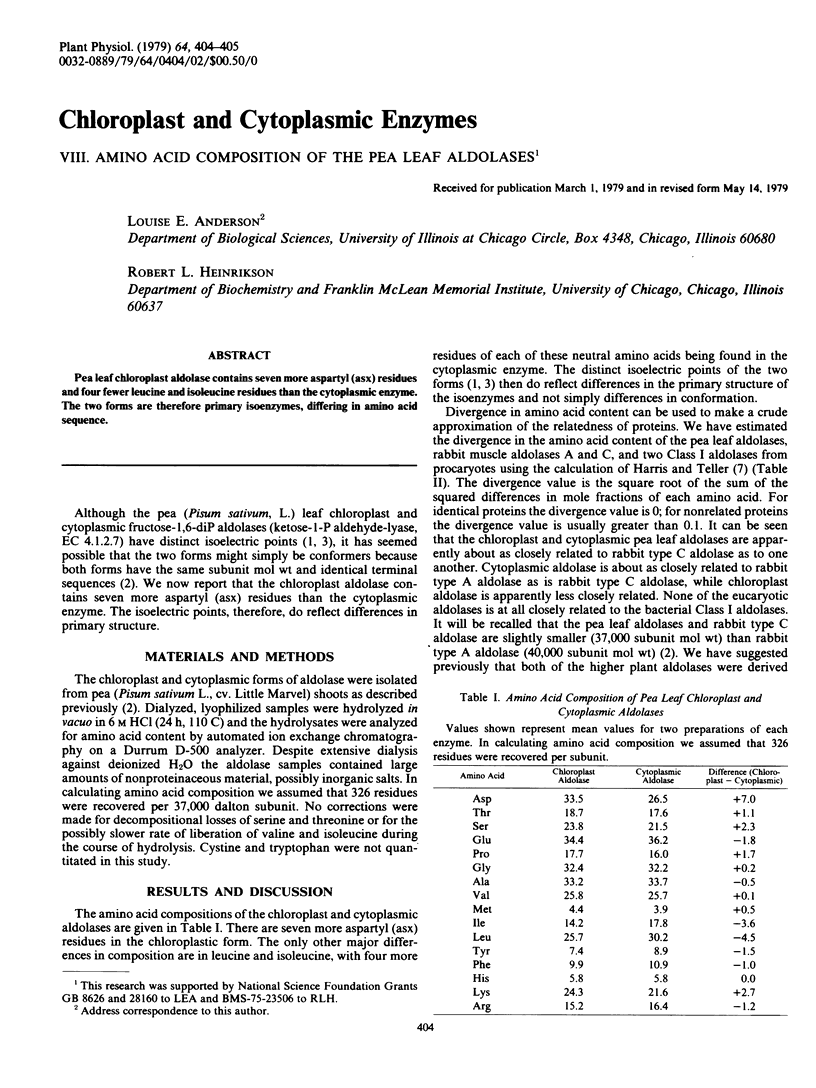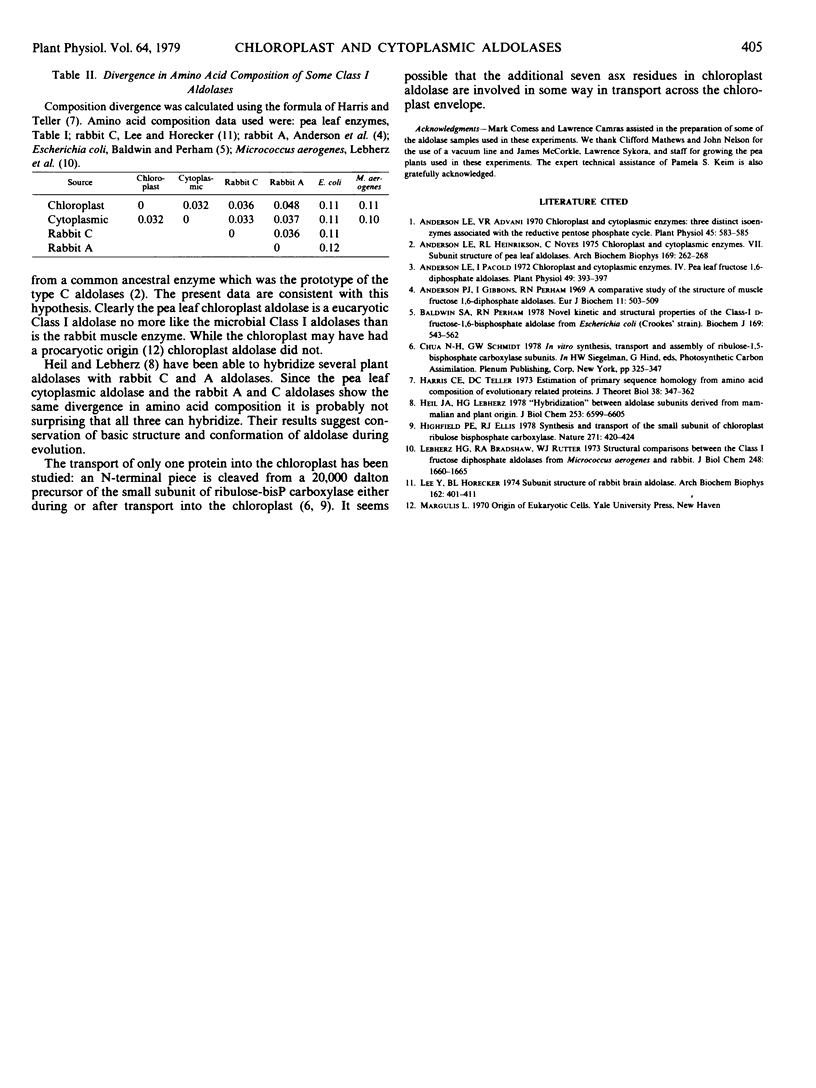Abstract
Pea leaf chloroplast aldolase contains seven more aspartyl (asx) residues and four fewer leucine and isoleucine residues than the cytoplasmic enzyme. The two forms are therefore primary isoenzymes, differing in amino acid sequence.
Full text
PDF

Selected References
These references are in PubMed. This may not be the complete list of references from this article.
- Anderson L. E., Advani V. R. Chloroplast and cytoplasmic enzymes: three distinct isoenzymes associated with the reductive pentose phosphate cycle. Plant Physiol. 1970 May;45(5):583–585. doi: 10.1104/pp.45.5.583. [DOI] [PMC free article] [PubMed] [Google Scholar]
- Anderson L. E., Heinrikson R. L., Nyes C. Chloroplast and cytoplasmic enzymes 1, 2, 3. Subunit structure of pea leaf aldolases. Arch Biochem Biophys. 1975 Jul;169(1):262–268. doi: 10.1016/0003-9861(75)90340-9. [DOI] [PubMed] [Google Scholar]
- Anderson L. E., Pacold I. Chloroplast and Cytoplasmic Enzymes: IV. Pea Leaf Fructose 1,6-Diphosphate Aldolases. Plant Physiol. 1972 Mar;49(3):393–397. doi: 10.1104/pp.49.3.393. [DOI] [PMC free article] [PubMed] [Google Scholar]
- Anderson P. J., Gibbons I., Perham R. N. A comparative study of the structure of muscle fructose 1,6-diphosphate aldolases. Eur J Biochem. 1969 Dec;11(3):503–509. doi: 10.1111/j.1432-1033.1969.tb00802.x. [DOI] [PubMed] [Google Scholar]
- Chua N. H., Schmidt G. W. In vitro synthesis, transport, and assembly of ribulose 1,5-bisphosphate carboxylase subunits. Basic Life Sci. 1978;11:325–347. doi: 10.1007/978-1-4684-8106-8_20. [DOI] [PubMed] [Google Scholar]
- Harris C. E., Teller D. C. Estimation of primary sequence homology from amino acid composition of evolutionary related proteins. J Theor Biol. 1973 Feb;38(2):347–362. doi: 10.1016/0022-5193(73)90179-3. [DOI] [PubMed] [Google Scholar]
- Heil J. A., Lebherz H. G. "Hybridization" between aldolase subunits derived from mammalian and plant origin. J Biol Chem. 1978 Sep 25;253(18):6599–6605. [PubMed] [Google Scholar]
- Lebherz H. G., Bradshaw R. A., Rutter W. J. Structural comparisons between the class I fructose diphosphate aldolases from Micrococcus aerogenes and rabbit. J Biol Chem. 1973 Mar 10;248(5):1660–1665. [PubMed] [Google Scholar]
- Lee Y., Horecker B. L. Subunit structure of rabbit brain aldolase. Arch Biochem Biophys. 1974 Jun;162(2):401–411. doi: 10.1016/0003-9861(74)90198-2. [DOI] [PubMed] [Google Scholar]
- Libor S. M., Sundaram T. K., Scrutton M. C. Pyruvate carboxylase from a thermophilic Bacillus. Studies on the specificity of activation by acyl derivatives of coenzyme A and on the properties of catalysis in the absence of activator. Biochem J. 1978 Mar 1;169(3):543–558. doi: 10.1042/bj1690543. [DOI] [PMC free article] [PubMed] [Google Scholar]


